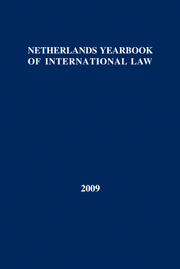Article contents
WIPO-WTO RELATIONS AND THE FUTURE OF GLOBAL INTELLECTUAL PROPERTY NORMS*
Published online by Cambridge University Press: 19 May 2009
Abstract
The World Trade Organization's (WTO) Agreement on Trade-Related Aspects of Intellectual Property Rights (TRIPS Agreement) has been the focus of intense scholarly debate regarding the effects of IP protection on the development interests of the global South. Far less attention has been directed at the organizational framework in which future IP norms should be developed. The governing assumption has been that the norm-setting role of the World Intellectual Property Organization (WIPO) remains unchanged notwithstanding the primacy of the WTO as an Organization with explicit mandate for global IP regulation.
In this Article, I argue that the WTO, in a hierarchical division of labor with WIPO, should be promoted as the locus of IP norm-setting, particularly with respect to those norms that affect the regulation and supply of global public goods. IP norm-setting in the WTO is not without risks. Nonetheless, an organizational culture in which IP protection is one of many tools to accomplish defined welfare goals, rather than the raison d'être of the organization's existence, may force open important institutional space in which future IP norms consistent both with the interests of less developed countries and the ideals of mature IP systems, can be meaningfully negotiated. At a minimum, a hierarchical relationship could facilitate inter-institutional competition between the WTO and WIPO, generating additional welfare gains for the international community in the form of greater transparency in the processes of IP norm-setting, improvements in the democratic deficit inherent in international organizations generally, as well as systemic gains from enhanced accountability in the global management of IP.
Keywords
- Type
- Articles
- Information
- Copyright
- Copyright © T.M.C. Asser Instituut and the Authors 2008
References
* © R.L. Okediji, 2009.
- 6
- Cited by


